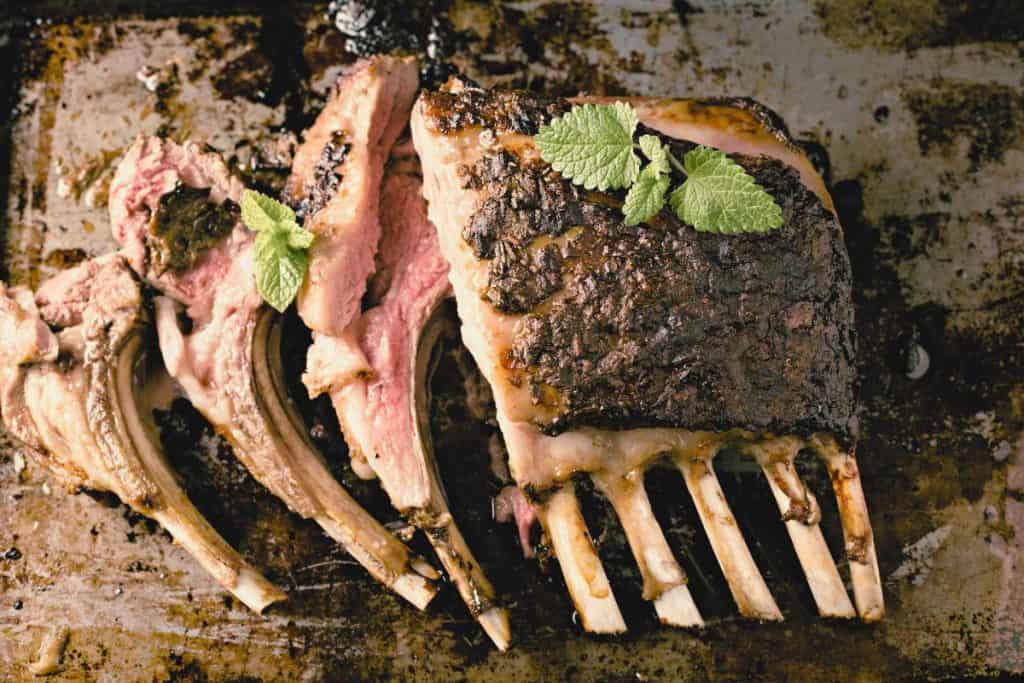Understanding Lamb in Canada: Versatility, Availability, and Grading
Why Lamb is a Favourite in Our Kitchen
Lamb is a staple in our home, and not just because we raise it. Its versatility makes it a such a pleasure to cook with, whether you’re preparing an stately grilled saddle or rib chop, or opting for something more rustic and comforting like a braised neck chop or stewed shank. Lamb seamlessly fits into both fine dining and traditional peasant-style cuisine, making it a truly flexible protein for chefs to turn to.
When it comes to seasoning, I believe that less is more. While many people associate lamb with mint sauce, my preference is a simple approach—just salt, pepper, fresh garlic, and a touch of butter. This allows the natural flavours of the meat to shine through. From time to time a spring of rosemary finds its way in my cooking also.
The Seasonality and Availability of Lamb in Canada
Lamb is often thought of as a spring ingredient, but it truly comes into its own in the fall. After spending the summer grazing on fresh grass, lamb develops a depth of flavour that pairs beautifully with hearty autumn vegetables like carrots, parsnips, and potatoes.
In Canada, lamb is available year-round. However, domestic production actually doesn’t meet demand, so imports from Australia, New Zealand, and Argentina supplement the market. Despite having an agricultural sector capable of producing high-quality lamb, Canada remains a net importer, relying on international supply chains to meet consumer needs, which is a shame.
The Decline and Resurgence of Lamb in Canadian Cuisine
For much of the 20th century, lamb fell out of preference in Canadian households. Many people had strong memories of wartime diets that relied heavily on mutton, which has a much stronger, gamier flavour. This association led to a decline in lamb consumption. However, in recent years, people have become more adventurous in their food choices, and lamb has been making a solid comeback in Canadian kitchens.
Understanding Canadian Lamb Categories
Lamb is sold under four primary categories in Canada, each based on the animal’s age and weight:
- Milk Lamb – Less than three months old, known for its exceptionally tender meat that is almost white.
- Light Lamb – A young lamb that is still relatively small.
- Light Heavy Lamb – Slightly older with more developed muscle and flavour.
- Heavy Lamb – The largest classification, typically between 45-55 pounds (20-25 kg), and just under 12 months old. (this is squarely where our lambs fall into)
Lambs over 12 months are no longer classified as lamb but rather as mutton, which has a much stronger taste and is less commonly consumed in Canada. This is usually determined by the number of teeth an animal has at the time of processing but lacking that, a consumer can gauge by the size of the back legs – the larger the leg, the older the animal obviously. anything larger than 10 lbs is likely coming from an animal older than a year.
Whether or not that is a bad thing is a topic of conversation for another day. Personally, I think young mutton has a place in the kitchen and we do get requests from time to time from clients looking for something with more character and bolder flavourings. A strong argument could be made that sheep raised to 18 months rather than 12 allows time for proper grass finishing to achieve those heavier weights.

How Lamb is Graded in Canada
Unlike beef, which has multiple grading levels (such as Canada AAA, AA, and A), Canadian lamb has a simpler system. The highest quality grade is Canada AAA. If a lamb does not meet this standard, it is classified under the C1 or C2 categories, which are generally considered “lower-quality” cuts.
Factors That Influence Lamb Grading
The grading system is based on two primary factors:
- Muscle Quality – The inspector evaluates the muscle development of the carcass, determining its overall tenderness and marbling.
- Fat Cover – The ideal fat depth falls between 13 mm and 30 mm. Too little fat can result in dry meat, while too much fat is undesirable for most consumers.
The Future of Lamb in Canada
As more people rediscover the joys of cooking with lamb, its popularity is steadily increasing. Whether sourced locally or imported, lamb provides a flavorful and versatile option for home cooks and professional chefs alike. With proper grading and categorization, consumers can make informed choices about the type and quality of lamb they purchase.
From quick pan-seared chops to slow-braised shanks, lamb remains one of the most exciting meats to work with—offering something for every palate and occasion. We sell lamb year round in our butcher boxes as well as bulk options for enthusiasts looking to stock their freezer!